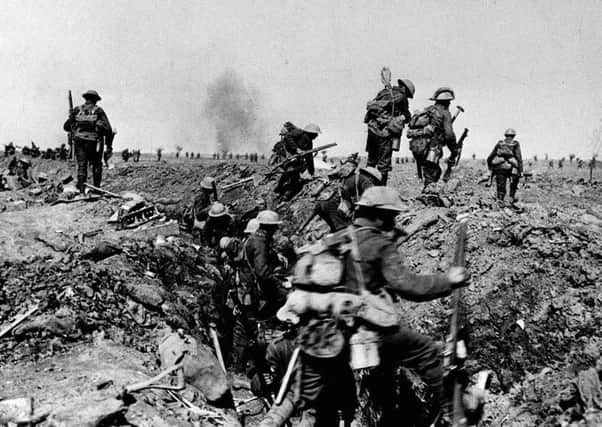Anniversary of darkest day


Two Fylde men who died that day – 2nd Lt Frank Anderton of the Lancashire Fusiliers and Private Bert Hurst of the Loyal North Lancs Regiment – will be remembered, as has been customary 100 years on from the deaths of First World war victims – by a quarter peal of bells at St Annes Parish Church.
Research by Gerald and Fiona Wilson of St Annes Parish Church, who have looked into the history of all the town’s victims of the First World War, shows that Frank was the son of James and Alice Anderton of Glenroyd, North Drive, St Annes.
Advertisement
Hide AdAdvertisement
Hide AdAs the St Annes Express of July 14, 1916 reported, his parents received a letter from his colonel confirming that he was missing. The letter said: “Lt Anderton bravely led his platoon to the attack and went over the top, where he was seen to be hit and fell. Search was made for him during three nights, but without results, and his fate, therefore, is in doubt.”
In his letter, the colonel describes him as a very promising officer. Frank was 21 and is buried at Redan Ridge Cemetery No. 2 on the Somme.
Private Bert Hurst was also killed in the first wave of the Great Offensive.
The St Annes Express of the time reported: “The deceased was very well known in the town and besides being a member of the Ist St. Annes (Parish Church) Troop of the Boy Scouts, he was in the Parish Church Choir.”
Advertisement
Hide AdAdvertisement
Hide AdA letter was received by his mother from Private J Unsworth, who was also from St Annes and in the same regiment. He wrote: “It is with regret that I write to inform you that your son, Bert, fell in action on the night of June 30 or the following morning.
“The fighting was very fierce, trenches being taken and lost many times over. I only came to know Bert last week, he having asked me if I came from St David’s Road, St Annes, saying that he had seen me there.
“He was a smart and cheerful young soldier and it is very sad to have lost him so young. I saw him brought in with several others and attended the burial service, which took place at 10am on Sunday, July 2.
“Bert’s death must have been instantaneous, as he was hit by shrapnel in the head and neck – a merciful death. I am with you in your bereavement.”
Advertisement
Hide AdAdvertisement
Hide AdBertie, who lived at 258 St David’s Road North, is buried at Maroc British Cemetery on the Somme.
Gerald said: “The battle continued for another four and a half months until it finally petered out with the onset of winter in mid November.
“During this time some 60 men from Lytham and St Annes were killed and many more were injured and maimed. They are remembered on memorials in Ashton Gardens, St Annes, in Lytham Market Square, as well as on the many memorials to be found in our churches and other institutions.”